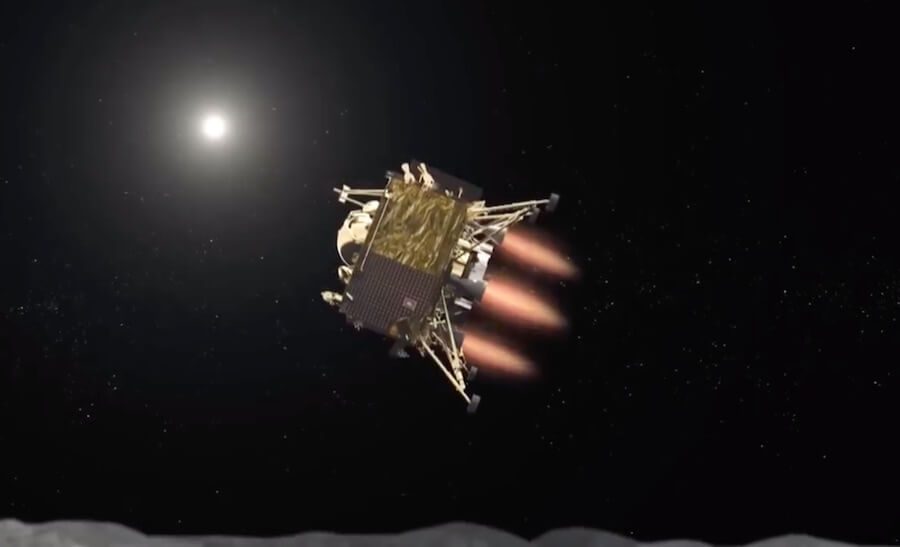While an Indian engineer managed to use NASA Lunar Reconnaissance Orbiter imagery to find the crash site of the Vikram lander of India’spartially successful Chandrayaan-2 mission, the Indian Space Research Agency (ISRO) has subsequently decided that it wants to try again.
On 1 January, ISRO’s Chairman Kailasavadivoo Sivan formally announced that there would be another ISRO attempt to land an unmanned craft onto the Moon. He noted that the mission – to be called Chandrayaan-3 – had government funding. Unlike Chandrayaan-2 which had an orbiter (which is still working well), as well as the crashed Vikram lander with the Pragyam rover aboard, and new mission will not have an orbiter, and will just consist of a lander and rover elements.

Artist’s impression of the Chandrayaan-2’s Vikram lander with Pragyam rover on board starting its landing sequence. Courtesy: ISRO
The Chandrayaan-2 mission failed in its main objective to make a landing on the Moon. During the second phase of descent of the Vikram lander/Pragyam rover combination, the reduction in velocity was more than the designed value breaking the design parameters of the control system at the start of the fine braking, which led to a control system malfunction and the turning off of the braking engine. The Vikram lander crashed on the lunar surface between Manzinus C and Simpelius N craters about 600 km from the lunar South Pole.






